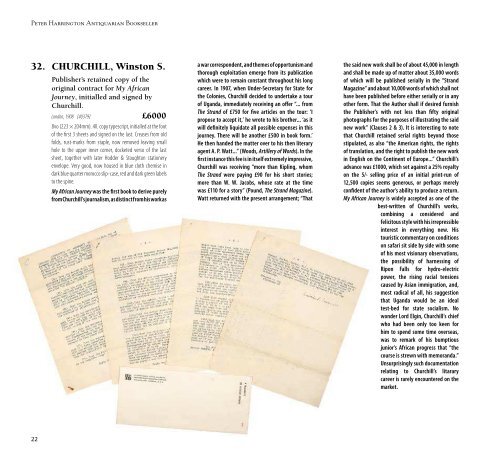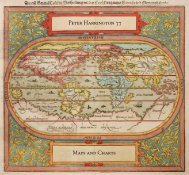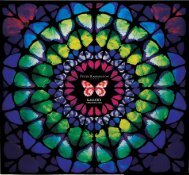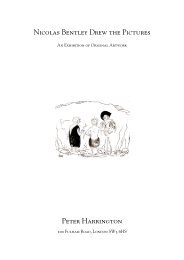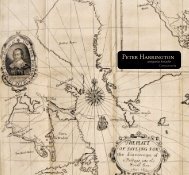antiquarian bookseller - Peter Harrington
antiquarian bookseller - Peter Harrington
antiquarian bookseller - Peter Harrington
Create successful ePaper yourself
Turn your PDF publications into a flip-book with our unique Google optimized e-Paper software.
<strong>Peter</strong> <strong>Harrington</strong> Antiquarian Bookseller<br />
32. CHURCHILL, Winston S.<br />
Publisher’s retained copy of the<br />
original contract for My African<br />
Journey, initialled and signed by<br />
Churchill.<br />
London, 1908 [40379] £6000<br />
8vo (223 × 204mm). 4ll. copy typescript, initialled at the foot<br />
of the first 3 sheets and signed on the last. Creases from old<br />
folds, rust-marks from staple, now removed leaving small<br />
hole to the upper inner corner, docketed verso of the last<br />
sheet, together with later Hodder & Stoughton stationery<br />
envelope. Very good, now housed in blue cloth chemise in<br />
dark blue quarter morocco slip-case, red and dark green labels<br />
to the spine.<br />
My African Journey was the first book to derive purely<br />
from Churchill’s journalism, as distinct from his work as<br />
a war correspondent, and themes of opportunism and<br />
thorough exploitation emerge from its publication<br />
which were to remain constant throughout his long<br />
career. In 1907, when Under-Secretary for State for<br />
the Colonies, Churchill decided to undertake a tour<br />
of Uganda, immediately receiving an offer “... from<br />
The Strand of £750 for five articles on the tour: ‘I<br />
propose to accept it,’ he wrote to his brother... ‘as it<br />
will definitely liquidate all possible expenses in this<br />
journey. There will be another £500 in book form.’<br />
He then handed the matter over to his then literary<br />
agent A. P. Watt...” (Woods, Artillery of Words). In the<br />
first instance this fee is in itself extremely impressive,<br />
Churchill was receiving “more than Kipling, whom<br />
The Strand were paying £90 for his short stories;<br />
more than W. W. Jacobs, whose rate at the time<br />
was £110 for a story” (Pound, The Strand Magazine).<br />
Watt returned with the present arrangement; “That<br />
the said new work shall be of about 45,000 in length<br />
and shall be made up of matter about 35,000 words<br />
of which will be published serially in the “Strand<br />
Magazine” and about 10,000 words of which shall not<br />
have been published before either serially or in any<br />
other form. That the Author shall if desired furnish<br />
the Publisher’s with not less than fifty original<br />
photographs for the purposes of illustrating the said<br />
new work” (Clauses 2 & 3). It is interesting to note<br />
that Churchill retained serial rights beyond those<br />
stipulated, as also “the American rights, the rights<br />
of translation, and the right to publish the new work<br />
in English on the Continent of Europe...” Churchill’s<br />
advance was £1000, which set against a 25% royalty<br />
on the 5/- selling price of an initial print-run of<br />
12,500 copies seems generous, or perhaps merely<br />
confident of the author’s ability to produce a return.<br />
My African Journey is widely accepted as one of the<br />
best-written of Churchill’s works,<br />
combining a considered and<br />
felicitous style with his irrepressible<br />
interest in everything new. His<br />
touristic commentary on conditions<br />
on safari sit side by side with some<br />
of his most visionary observations,<br />
the possibility of harnessing of<br />
Ripon Falls for hydro-electric<br />
power, the rising racial tensions<br />
caused by Asian immigration, and,<br />
most radical of all, his suggestion<br />
that Uganda would be an ideal<br />
test-bed for state socialism. No<br />
wonder Lord Elgin, Churchill’s chief<br />
who had been only too keen for<br />
him to spend some time overseas,<br />
was to remark of his bumptious<br />
junior’s African progress that “the<br />
course is strewn with memoranda.”<br />
Unsurprisingly such documentation<br />
relating to Churchill’s litarary<br />
career is rarely encountered on the<br />
market.<br />
33. CHURCHILL, Winston S.<br />
My African Journey.<br />
London, Hodder and Stoughton, 1908 [24923] £875<br />
8vo. Original pictorial red cloth, titles to spine gilt, titles and<br />
decoration to upper board in blue and black. Illustrated with<br />
photographic frontispieces and maps. Some light sporadic<br />
foxing, slight fading to spine, some detail missing from figure<br />
and palm trees and small water stain to front board, otherwise<br />
in very good condition. Ownership inscription in ink to front<br />
free endpaper.<br />
FIRST EDITION in book form, first published in shorter<br />
form as a series of magazine articles. Churchill had set out<br />
in autumn 1907 on a tour of east Africa which began as a<br />
hunting expedition but turned into a semi-official inquiry<br />
into colonial affairs. In Kenya he went big-game hunting<br />
and investigated the conditions of African contract<br />
workers. In Uganda he visited Christian missions, took tea<br />
with Daudi Chewa, the 11-year-old kabaka of Buganda,<br />
and took up with great enthusiasm the project for a dam<br />
across the Ripon Falls.<br />
Woods A12.<br />
34. [COLENSO, Frances<br />
Ellen]<br />
Catalogue 57: Travel Section 2: Africa and the Middle East to Persia<br />
My Chief and I. Or, Six Months<br />
in Natal after the Langalibalele<br />
Outbreak. By Atherton Wylde<br />
[pseud.]<br />
London, Chapman and Hall, 1880 [but 1879]. [39729]<br />
£1500<br />
8vo. Modern green half calf on marbled boards, red<br />
morocco label, spine gilt in compartments. Oval mounted<br />
Woodburytype portrait frontispiece of Durnford and one other<br />
mounted photographic plate, 2 tinted lithographic plates. A<br />
little browned, else very good.<br />
FIRST EDITION. “Under the fictitious guise of a young<br />
soldier, the authoress gives an account of six month’s<br />
life and experiences with Colonel A. W. Durnford who<br />
lost his life at Isandhlwana. The writer was evidently an<br />
enthusiastic admirer of the gallant soldier” (Mendelssohn).<br />
Daughter of Bishop Colenso of Natal (described by<br />
SADNB as a “protagonist of the Zulu people”), Frances<br />
completed Durnford’s work History of the Zulu War and<br />
its Origins, also with the publication date 1880. The first<br />
series of adverts here has the issue date November 1879.<br />
This copy has the bookplate of Durnford’s father Edward<br />
William Durnford mounted on the front pastedown, and a<br />
gift inscription, “John Wolfe Lydekker from his grandfather<br />
Edward C.L. Durnford” on the verso of the front free<br />
endpaper. Lieut.-Colonel Edward Durnford R.E. was<br />
brother of the subject and editor of his posthumouslypublished<br />
A Soldier’s Life and Work in South Africa, 1872–<br />
1879 (see item 41 below)<br />
FINE VIEWS IN JERUSALEM AND<br />
THE MIDDLE EAST<br />
35. DAPPER, Olfert.<br />
Naukeurige beschryving van gantsch<br />
Syrie, en Palestyn of Heilige Lant.<br />
Amsterdam: Jacob van Meurs, 1677 [13125] £4250<br />
Folio, in two parts. Contemporary mottled calf neatly rebacked,<br />
two-line gilt border to edges, all edges speckled red. First title<br />
page printed in red and black, with engraved allegorical title,<br />
8 maps, 30 plates (mainly double-page) and 34 plates in the<br />
text. Text printed in double-columns. A very good copy: clean,<br />
sound, with excellent impressions of the plates, and complete<br />
with the Directions to the Binder.<br />
FIRST EDITION. Dr Olfert Dapper (1636–1688), physician,<br />
geographical and historical scholar, was the author of<br />
a series of works dealing with Africa, America and Asia;<br />
all were published in handsome folio format and are best<br />
known for their fine double-page or folding views and<br />
panoramas. The extensive panorama of Jerusalem in the<br />
present work had also been used in Dapper’s book on Asia<br />
(Amsterdam 1672). There are fine views of Damascus,<br />
Tripoli, Aleppo, Jaffa, Rama, the Temple of Solomon, and a<br />
birds-eye view of Jerusalem (trimmed at sides).<br />
22 23<br />
Mendelssohn I, p. 356.


